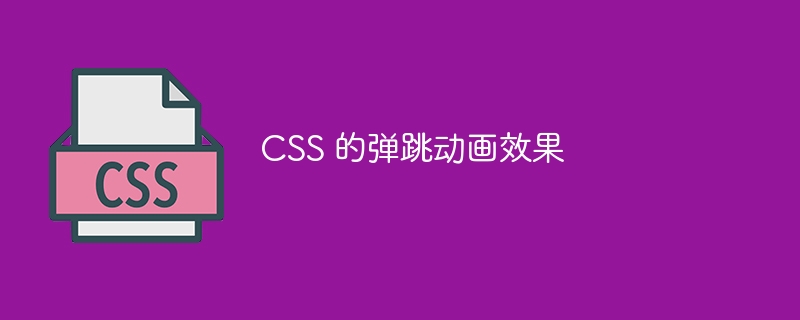

The bounce animation effect is used to cause an element to quickly move upward, backward, or away from a surface after being hit.
Live Demonstration
<html>
<head>
<style>
.animated {
background-image: url(/css/images/logo.png);
background-repeat: no-repeat;
background-position: left top;
padding-top:95px;
margin-bottom:60px;
-webkit-animation-duration: 1s;
animation-duration: 1s;
-webkit-animation-fill-mode: both;
animation-fill-mode: both;
}
@-webkit-keyframes bounce {
0%, 20%, 50%, 80%, 100% {-webkit-transform: translateY(0);}
40% {-webkit-transform: translateY(-30px);}
60% {-webkit-transform: translateY(-15px);}
}
@keyframes bounce {
0%, 20%, 50%, 80%, 100% {transform: translateY(0);}
40% {transform: translateY(-30px);}
60% {transform: translateY(-15px);}
}
.bounce {
-webkit-animation-name: bounce;
animation-name: bounce;
}
</style>
</head>
<body>
<div id="animated-example" class="animated bounce"></div>
<button onclick="myFunction()">Reload page</button>
<script>
function myFunction() {
location.reload();
}
</script>
</body>
</html>The above is the detailed content of CSS bounce animation effect. For more information, please follow other related articles on the PHP Chinese website!




